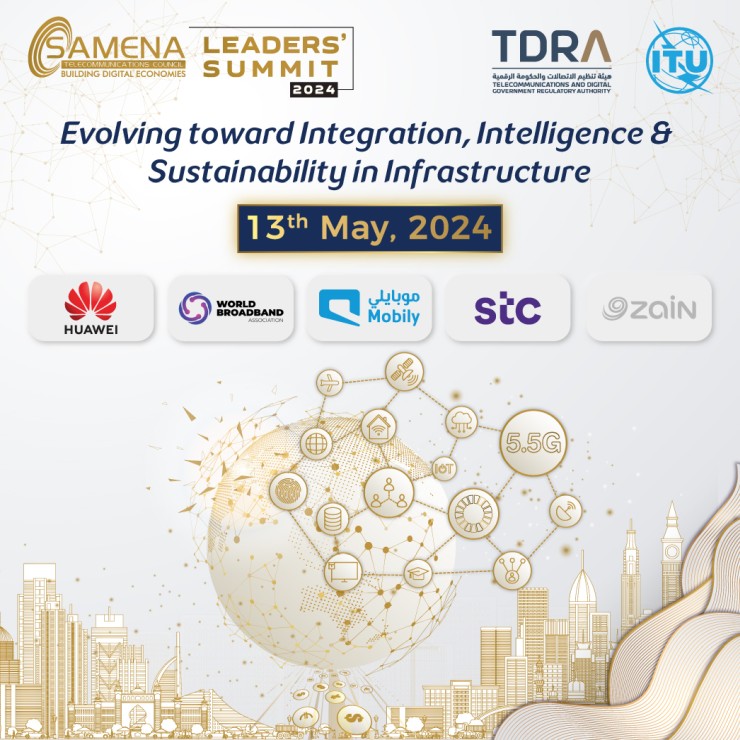Industry Thought Leadership
The Success of the Digital Economy Relies on Connectivity
September, 2021The digital economy improves economic and societal outcomes within countries and serves as a source for innovation and productivity growth. A precise measurement of the digital economy is difficult, but the United Nations cites a range from 4.5% to 15.5% of global GDP, or $4 trillion to $13.6 trillion in 2019 (based on 2019 global GDP of $87.8 trillion). Connectivity is essential to the success of the digital economy, fiber network is the foundation of full-service infrastructure, and IPv6 and IPv6 enhanced innovation is the cornerstone for smart connection.
In Middle East region, most of the operators has already started the fiber and IPv6 journey.
UAE is ranked number one for the highest Fiber to the Home (FTTH) penetration among all its global counterparts for a third year in a row in 2019, according to the leading industry body FTTH Council. Companies operating telecommunications services in the country have allocated a monumental budget for investment in infrastructure amounting to AED 36 billion, which made the country own an infrastructure among the best in the world in terms of providing "fiber" services and coverage in general.
In Saudi Arabia, STC is one of the first Internet service providers (ISPs) to roll out a full production Internet Protocol version 6 (IPv6) connectivity to its client infrastructure and cloud services platform since 2019. Zain started study on IPv6 back in 2015, and now all Zain subscribers are enabled to use Ipv6, and more than 50% of subscribers are ipv6 active.
Additionally, many governments introduced policies to accelerate investment in network facilities. These policies are not just about responding to the present pandemic risks, but more about investing in the future.
Pakistan cabinet approved the very first Right of Way (ROW) Policy for the telecom sector in January 2021, the Ministry for Information Technology and Telecommunications (MoITT) published the policy which clears a large number of hurdles faced by telcos and internet service providers in the installation and maintenance of their telecommunication equipment and expansion of systems across the country.
Bahrain Telecommunications Regulatory Authority (TRA) published the Fifth National Telecommunications plan (NTP5) on its’ official website, aiming to cover 95% household, 100% business premises, 100% of public telecommunication stations by fiber.
Saudi Arabia’s Communications and Information Technology Commission (CITC) formed the IPv6 Task Force in 2008 with the mission to gather stakeholders from public and private sectors and raise awareness and encourage the deployment of IPv6 nationwide. In addition to coordinating workshops and activities in the country, the group also works with the IPv6 Forum and other national IPv6 task forces. Saudi Arabia currently ranks 10th globally in IPv6 adoption, at 46.6%, according to Google.
In 2016, the UAE regulator launched its IPv6 initiative with Réseaux IP Européens Network Coordination Centre (RIPE NCC), the regional internet registry for Europe, West Asia, and the former USSR. Expanding the partnership, in 2017, the UAE regulator signed an MoU with RIPE NCC to enhance cooperation and exchange of expertise between the different sectors throughout the Middle East. Less than two years after launching IPv6 in the country, the UAE became the number one Middle Eastern country in IPv6 adoption. Today, The UAE ranks 15th globally, at 41.19%, according to Google.
Overall, the optical fiber and IPv6 connectivity are serving as a conduit for the growth of the region's digital economies. In the case of fiber & IPv6 development, the question is no longer about “why” but “how”. Pioneering telecom operators and governments in the region have proven that fiber & IPv6 development can bring tremendous profits and significant economic value. More fiber to the wireless base stations to unleash full potential of 5G, more fiber to the home to enable true giga experience for remote working and education; enabling IPv6 to support digital transformation, such as Internet of Vehicles, industrial Internet, holographic communications, Internet of Things (IoT), and Internet finance.
To make the best of today for a better future, a full fiber-based infrastructure and IPv6-based intelligent network will undoubtedly remain a priority in most of the region over the next decade.

